Travel Guide: Chile
Questions This Article Answers
What should I visit in Chile?
What should I do in Chile?
What are the best things to do in Chile?
What to do in Chile?
What to see in Chile?
What to visit in Chile?
Santiago: The Urban Pulse of Chile
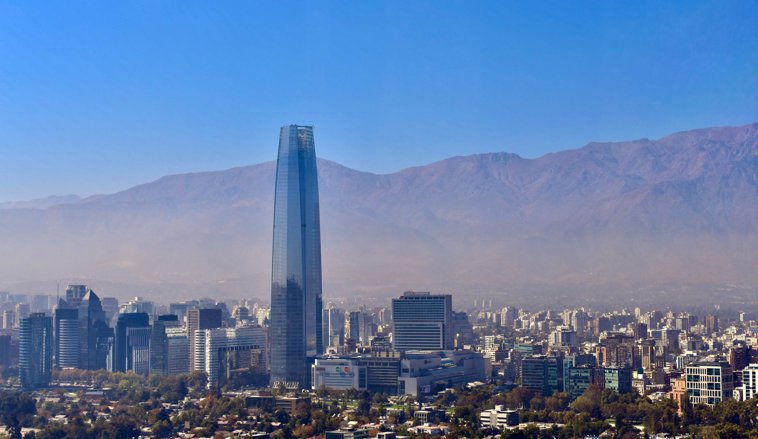
We’ll begin our journey in Santiago(Santiago), Chile’s capital. A great starting point is the plaza de Armas(Main Square), the city’s historic center. The square, surrounded by the neoclassical Catedral Metropolitana(Metropolitan Cathedral) and the Correo Central de Santiago(Central Post Office Building), is a lively hub where local artisans, street performers, and residents gather. Close by is the Palacio de La Moneda(La Moneda Palace), an imposing neoclassical building and the country’s presidential seat. If you’re into history and art, visit the nearby Museo Chileno de Arte Precolombino(Chilean Museum of Pre-Columbian Art) to explore ancient Latin American cultures.
Santiago…¡de Chile!
The full name of Chile’s capital city is actually Santiago de Chile(Santiago of Chile). If that seems redundant, think of the many, many (really, many!) cities named Santiago in the Spanish-speaking world, including Santiago de Cuba(Santiago of Cuba) in Cuba, Santiago de los Caballeros(Santiago of the Knights) in the Dominican Republic, and Santiago de Cali(Santiago of Cali) in Colombia.
Why so many Santiagos? Well, Santiago in Spanish refers to Saint James, one of the Twelve Apostles of Jesus Christ. It’s a name that’s not only popular for cities but also for people in the Spanish-speaking world.
It’s rumored that the remains of Saint James actually lie in another famous city named after him: Santiago de Compostela(Santiago of Compostela), in Northern Spain, which thousands of pilgrims visit today. If you want to learn more, check out our article on the The Camino de Santiago!
While you’re in Santiago, it’s worth including a visit to Cerro San Cristóbal(San Cristobal Hill). You can reach the summit via funicular or a hike, where you’ll enjoy a panoramic view of the city against the stunning Andes backdrop. It’s also worth checking out Barrio Bellavista(Bellavista Neighborhood), a bohemian neighborhood adorned with colorful murals that comes alive as the sun goes down. It’s a great place to experience Santiago’s nightlife and savor some Chilean classics such as empanadas chilenas(Chilean empanadas) and completos(Chilean-style hotdogs). In the Barrio Bellavista, you can also visit La Chascona(La Chascona), one of three houses owned by Pablo Neruda, Chile’s poeta nacional(national poet) and the winner of the 1971 Premio Nobel de Literatura(Nobel Prize in Literature).
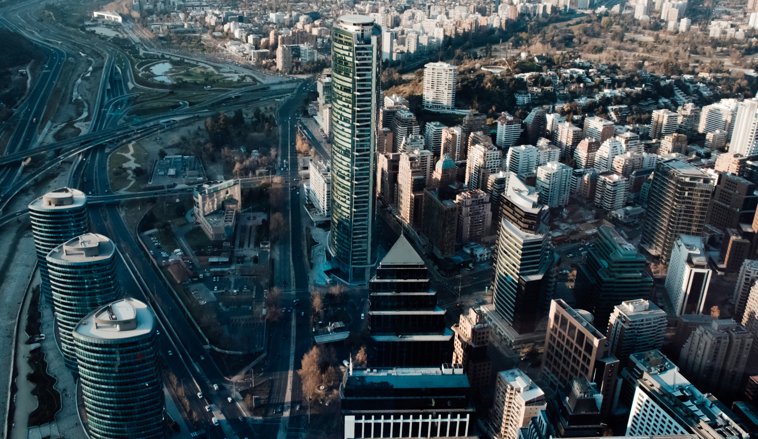
Another site of interest is the Costanera Center(Costanera Center), South America’s tallest skyscraper, featuring an observation deck and a vast centro comercial(shopping mall).
Santiago is a big city, and there are a ton of things to see and do! So, here’s a list of some of the most interesting sites as well as some vocabulary that will help you get around:
Valparaíso: City of Hills
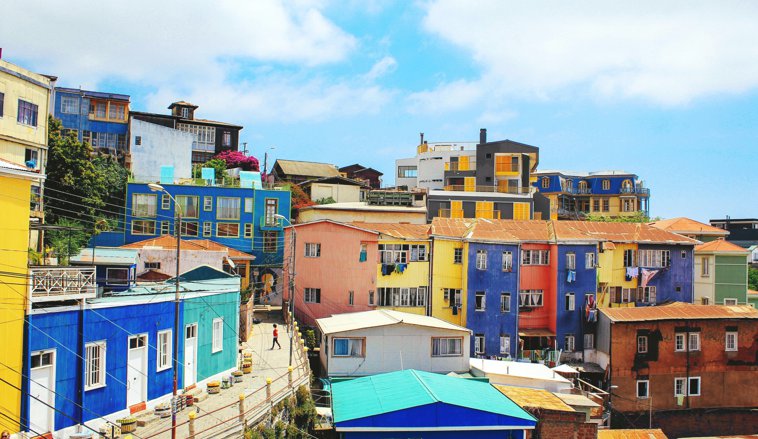 Our next stop is the picturesque port city of Valparaíso(Valparaiso), affectionately dubbed Valpo(Valpo) by some. Its colorful hillside houses, calles adoquinadas(cobblestone streets), and artistic murals make you fall in love with it in no time.
Our next stop is the picturesque port city of Valparaíso(Valparaiso), affectionately dubbed Valpo(Valpo) by some. Its colorful hillside houses, calles adoquinadas(cobblestone streets), and artistic murals make you fall in love with it in no time.
Ascensores: Chilean Funiculars
A unique feature of Valpo are its funiculars, known locally as ascensores (elevators). These hillside elevators, most over a century old, are a fun way to get breathtaking views of the city.
Ascensor Artillería(Artillery Funicular), one of the most iconic, provides a panoramic sweep of the port and the Pacific, while Ascensor Reina Victoria(Queen Victoria Funicular) takes you to the heart of the artsy Cerro Alegre(literally, Happy Hill) neighborhood.
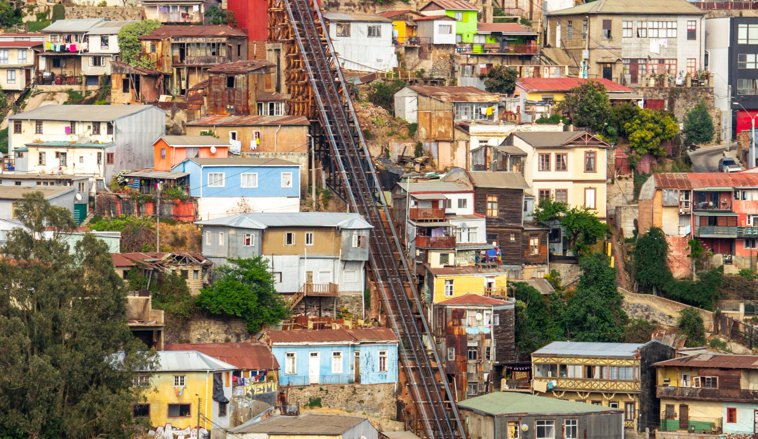 In Cerro Alegre and the adjacent Cerro Concepción (Conception Hill), you’ll find colonial mansions, boutique hotels, artsy cafes, and some of the city’s most iconic street murals. The historic Paseo Yugoslavo (literally, Yugoslavian Way) not only offers panoramic views of the bay but also houses the beautiful Palacio Baburizza(Baburizza Palace), now converted into a fine arts museum.
In Cerro Alegre and the adjacent Cerro Concepción (Conception Hill), you’ll find colonial mansions, boutique hotels, artsy cafes, and some of the city’s most iconic street murals. The historic Paseo Yugoslavo (literally, Yugoslavian Way) not only offers panoramic views of the bay but also houses the beautiful Palacio Baburizza(Baburizza Palace), now converted into a fine arts museum.
The Paseo 21 de Mayo (literally, the 21st of May Way) at Cerro Artillería(Artillery Hill) is another must-visit viewpoint. The Museo a Cielo Abierto (Open Air Museum), meanwhile, showcases a series of large-scale murals emblematic of Valparaíso’s thriving street art scene. If history is your thing, check out the Museo Marítimo Nacional(National Maritime Museum), where you can learn about Chile’s naval heritage and the significance of Valparaíso as a ciudad portuaria(port city).

You might also like to explore the Mercado Cardonal(Cardonal Market). This bustling market offers an array of fruta(fruit), quesos(cheeses), and encurtidos(pickled products), as well as several eateries serving up traditional Chilean dishes. And for a quiet escape from the city’s hustle and bustle, the Cementerio de Disidentes(Cemetery of Dissidents), with its ornate mausoleums and statues, offers a peaceful retreat.
Let’s go over some of the vocabulary and places:
San Pedro de Atacama: Desert Oasis
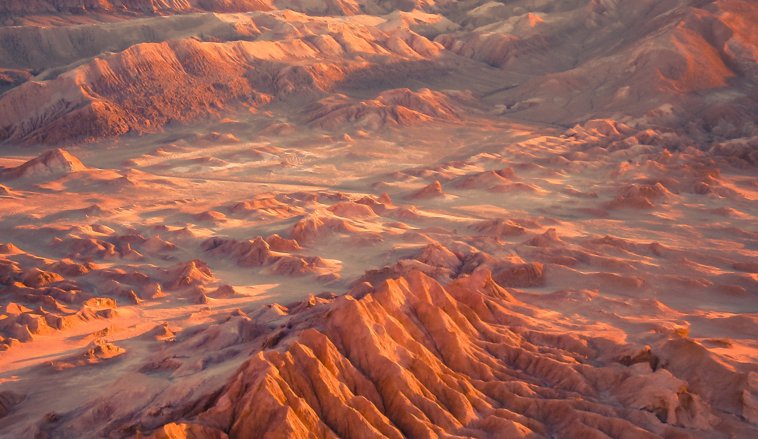 The town of San Pedro de Atacamaserves as a gateway to the world’s driest place: El desierto de Atacama(The Atacama Desert).
The town of San Pedro de Atacamaserves as a gateway to the world’s driest place: El desierto de Atacama(The Atacama Desert).
The town itself, with its adobe walls, rustic streets, and bustling craft markets, is quite charming, and, more often than not, full of mochileros(backpackers) from all over the world.
Among the town's top draws is the valle de la Luna(Valley of the Moon), a surreal lunar-like landscape. As the sun sets, the valle de la Luna comes alive with otherworldly hues, making it a prime spot for stargazing. Speaking of which, the Atacama Desert is renowned for its clear, unpolluted skies, making it one of the world's premier destinations for astronomy enthusiasts. The Atacama Large Millimeter/submillimeter Array (ALMA), an observatorio astronómico(astronomical observatory), is perched at an elevation of over 16,000 feet in the desert, offering unprecedented views of the cosmos.
You can also visit the salar de Atacama(Atacama Salt Flat), Chile’s largest salt flat, and the surrounding lagoons, which are home to thousands of flamencos(flamingos).
 Let’s go over some of the places to see in San Pedro de Atacama, as well as some useful vocabulary:
Let’s go over some of the places to see in San Pedro de Atacama, as well as some useful vocabulary:
Punta Arenas: Gateway to Antarctica
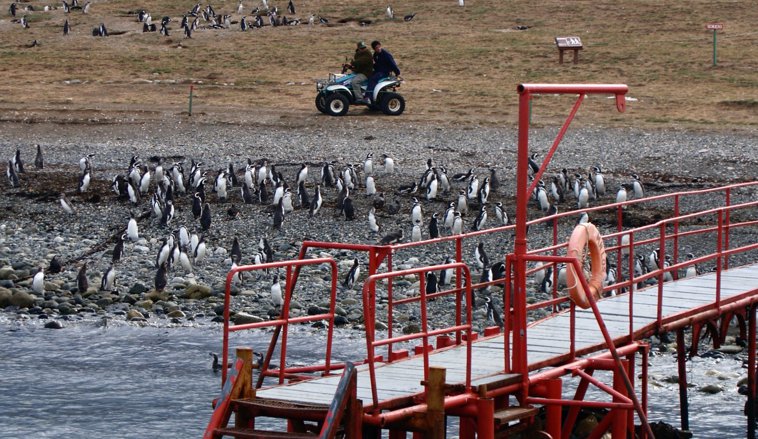 Located at the southern tip of Chile along the estrecho de Magallanes(Strait of Magellan), Punta Arenas(Punta Arenas) is the most populous southernmost city in Latin America. Originally established as a penal colony in the 19th century, today the city is a popular destino turístico(tourist destination) and one of the ports people use to visit Antártida(Antarctica).
Located at the southern tip of Chile along the estrecho de Magallanes(Strait of Magellan), Punta Arenas(Punta Arenas) is the most populous southernmost city in Latin America. Originally established as a penal colony in the 19th century, today the city is a popular destino turístico(tourist destination) and one of the ports people use to visit Antártida(Antarctica).
The Longest Country
Part of the reason why you can find arid deserts and icy glaciers in Chile is that it holds the distinction of being the world's longest country from north to south. It stretches over 4,300 kilometers (2,670 miles)!
The plaza Muñoz Gamero(Muñoz Gamero Square), the city’s main square, is adorned with beautiful gardens and historic buildings, including the Palacio Sara Braun(Sara Braun Palace), a magnificent mansion from the city's era dorada(golden era). The Museo Regional de Magallanes(Regional Museum of Magellan), meanwhile, features exhibits on indigenous cultures, early explorers, and the local flora and fauna. Nearby is the Museo Nao Victoria(Nao Victoria Museum), where you can find a full-scale replica of Ferdinand Magellan's ship, the Nao Victoria(Victoria Ship).
Punta Arenas also serves as the gateway to some of the most captivating natural wonders of the Patagonia chilena(Chilean Patagonia). Perhaps the most famous attraction is the parque nacional Torres del Paine(Torres del Paine National Park), an iconic national park famous for its three towering granite spires as well as a number of rivers, lakes, and glaciers. While there, you might spot a guanaco(guanaco), a llama-like mammal that roams around the park.
A short boat ride away from Punta Arenas is Isla Magdalena(Magdalena Island), where you can watch pingüinos de Magallanes(Magellanic penguins) up close. You can also plan a trip to Isla Grande de Tierra del Fuego(literally, Big Island of the Land of Fire) and visit the reserva natural Pingüino Rey(King Penguin Natural Reserve), where you can catch a glimpse of the larger pingüinos rey(king penguins).
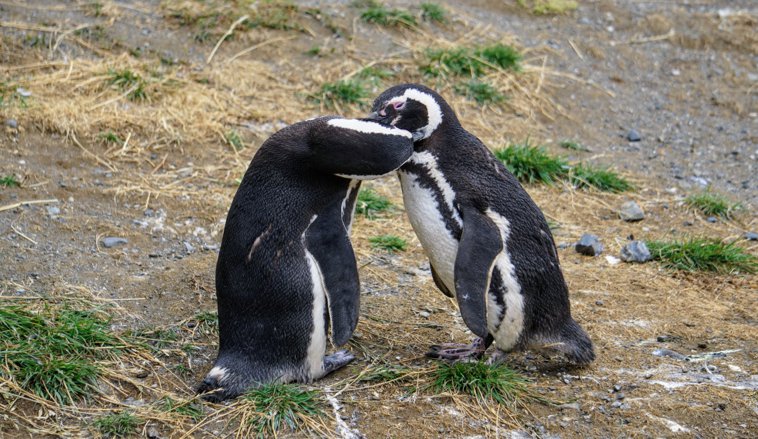 Now, let’s go over some of the places and animals you can see around Punta Arenas:
Now, let’s go over some of the places and animals you can see around Punta Arenas:
Isla de Pascua: Home of the Iconic Moai
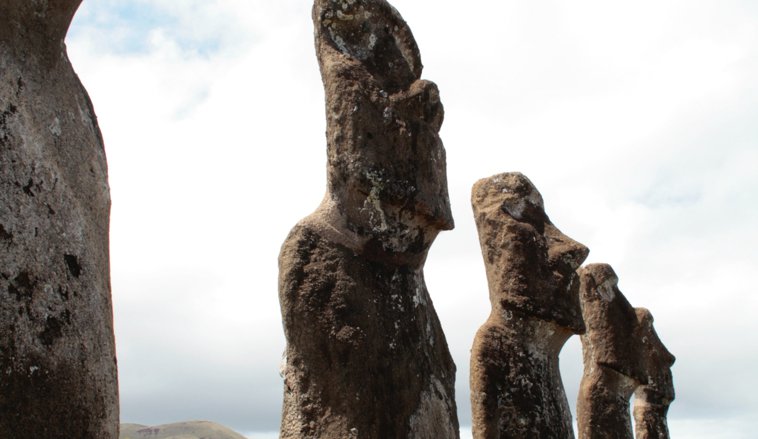 Last but not least is the Isla de Pascua(Easter Island), or Rapa Nui(Rapa Nui), as it’s known to its indigenous inhabitants. Today, much of the island is part of the protected parque nacional Rapa Nui(Rapa Nui National Park), a Patrimonio de la Humanidad de la UNESCO(UNESCO World Heritage Site).
Last but not least is the Isla de Pascua(Easter Island), or Rapa Nui(Rapa Nui), as it’s known to its indigenous inhabitants. Today, much of the island is part of the protected parque nacional Rapa Nui(Rapa Nui National Park), a Patrimonio de la Humanidad de la UNESCO(UNESCO World Heritage Site).
The island’s main attraction is its famous stone statues, known as moai(moai). There are around a thousand statues scattered around the island, all made from piedra volcánica(volcanic rock) by the original Rapa Nui people. Most of the statues are clustered in ceremonial shrines known as "ahu." The Complejo Ceremonial Tahai(Tahai Ceremonial Complex), where three ahus are located, is a short 20 minute walk from Hanga Roa(Hanga Roa), the island’s capital. Another must-visit place is Rano Raraku(Rano Raraku), the quarry where most of the statues were carved. There you can see incomplete moais still attached to the stone!
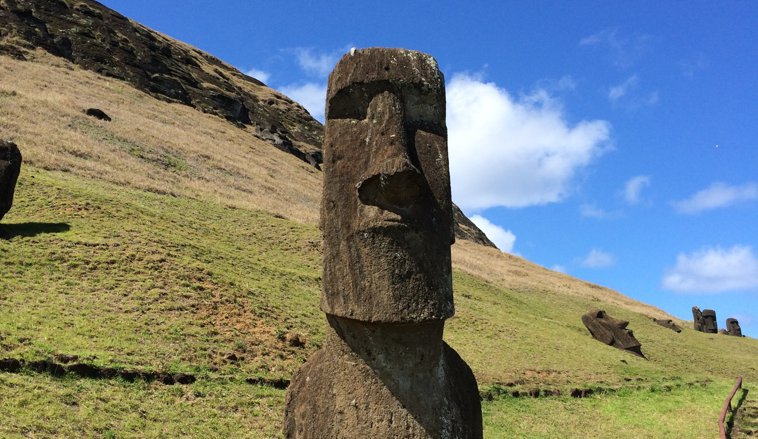 Here’s some vocabulary related to Rapa Nui:
Here’s some vocabulary related to Rapa Nui:
Did all this talk about Chile spark your travel curiosity? Check out the following articles for more great destinations to consider!














